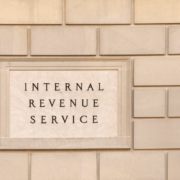IRS Announces Max Dollar Amount for Excepted Benefit HRAs
- Learn about laws applicable to group health plans.
- What are “excepted benefits”?
- Find out more about the rules governing HRAs.
- Learn about the indexing methodology of excepted benefits HRAs.
In a Revenue Procedure, the IRS recently provided information regarding HRAs for 2021. Specifically, the procedure announced the inflation-adjusted maximum dollar amount that may be made for excepted benefit Health Reimbursement Arrangements (HRAs) or other account-based group health plans next year. More specifically, the amount applies to plan years beginning after December 31, 2020, and before January 1, 2022 — referred to as the “2021 plan year.” Need more information? Fiducial has it!
Applicable laws
Group health plans are subject to a variety of requirements under the:
- Health Insurance Portability and Accountability Act (HIPAA), and
- Affordable Care Act, which incorporated Public Health Service Act (PHSA) requirements into the Internal Revenue Code.
HIPAA rules limit preexisting condition exclusions. They also prohibit the exclusion of certain people based on their health status and guarantee their health insurance. renewability.
The PHSA rules provide for standards related to other very important benefits. These benefits apply to mothers and newborns, mental health parity and requirements related to coverage for dependent students on medically necessary leaves of absence. In addition, the rules limit lifetime and annual limits and require coverage of certain preventive services. They also extend dependent coverage and impose various other market reforms on group health plans and health plan issuers.
Excepted benefits and HRAs
The requirements listed above generally don’t apply to “excepted benefits.” These include:
- Limited scope vision and dental benefits,
- Benefits for long-term care, nursing home care, home health care or community-based care (or any combination thereof), and
- Other similar, limited benefits as specified.
Tax code regulations provide rules for HRAs and other “account-based” group health plans to qualify as excepted benefits (referred to as “excepted benefit HRAs”). An HRA is an arrangement that:
- Is paid for solely by the employer and not provided pursuant to a salary reduction election or otherwise under a cafeteria plan,
- Reimburses medical care expenses incurred by an employee as well as his or her spouse and dependents,
- Provides reimbursements up to a maximum dollar amount for a coverage period, and
- Specifies that any unused portion of the maximum dollar amount at the end of a coverage period carries forward. This will increase the maximum reimbursement amount in subsequent coverage periods.

Indexing methodology for excepted benefit HRAs
Tax code regulations provide that, for each plan year, amounts newly made available to excepted benefit HRAs cannot exceed $1,800.
For plan years beginning after December 31, 2020, the $1,800 amount is adjusted for inflation by an amount equal to $1,800 multiplied by the applicable cost-of-living adjustment. Any increase that’s not a multiple of $50 is rounded down to the next lowest multiple of $50.
Because of this indexing methodology, the maximum newly made available amount for an excepted benefit HRA remains $1,800 for the 2021 plan year.
Future announcements
If your organization offers employees an excepted benefit HRA, be sure to share this update with them. Fiducial can provide more information and keep you apprised of future IRS announcements regarding health care benefits.
Call Fiducial at 1-866-FIDUCIAL or make an appointment at one of our office locations. Ready to book an appointment now? Click here. Know someone who might need our services? We love referrals!
For more small business COVID-19 resources, visit Fiducial’s Coronavirus Update Center to find information on SBA loans, tax updates, the Paycheck Protection Program, paid sick and family leave, and more.









